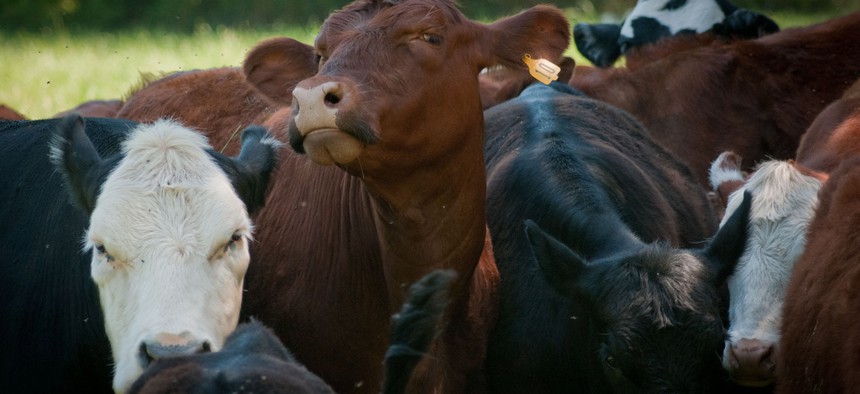The FDA Says Farmers Are Giving Animals Too Many Antibiotics
Overuse of the drugs has increased over the past few years. That's not good for human health.
A piece of bad news from the Food and Drug Administration: In the war against antibiotic overuse, the antibiotics are winning.
The amount of antibiotics given to farm animals in the United States increased by 16 percent between 2009 and 2012, the agency announced in a new report, and nearly 70 percent of those used are considered “medically important” for humans. That’s trouble for us as much as it is for our four-legged friends, who consume the majority of antibiotics in the U.S.—as much as 80 percent are given to the chickens, pigs, and cows bound for our grocery-store shelves, both to spur more rapid growth and to proactively protect them from disease.
Such widespread use of antibiotics has led to bugs that are getting tougher and tougher to treat. Worldwide, strains of drug-resistant tuberculosis and gonorrhea are on the rise. In the U.S., antibiotic resistance caused more thantwo million illnesses in 2013, according to a report by the Centers for Disease Control and Prevention, and an estimated 23,000 deaths, adding up to more than $20 million in healthcare costs.
“Although antibacterial resistance can be slowed,” Nicole Allan wrote in The Atlantic earlier this year, “it is inevitable. As a result, pharmaceutical companies have found antibiotics to be less worthwhile investments than drugs for chronic illnesses.” As the bacteria have evolved, in other words, our weapons against them haven’t kept pace.
Last month, President Obama signed an executive order to establish a new task force dedicated to addressing antibiotic resistance. And last year, the FDA announced a plan to cut down on animal antibiotic use, encouraging pharmaceutical companies to change the labels of their drugs so that they require veterinarian prescriptions (many are over-the-counter) and can no longer be used for growth enhancement. “It’s a big shift from the current situation, in which animal producers can go to a local feed store and buy these medicines over the counter and there is no oversight at all,” Michael Taylor, the FDA’s deputy commissioner for foods and veterinary medicine, told The New York Times when the guidelines were first announced. Given that this new data stops at 2012, though, it remains to be seen how much good they actually did.
Developing new antibiotics isn’t cheap, and neither is farming without them—but the cost of the alternative is much greater. “A post-antibiotic era,” the World Health Organization warned earlier this year, “far from being an apocalyptic fantasy, is instead a very real possibility for the 21st century."



